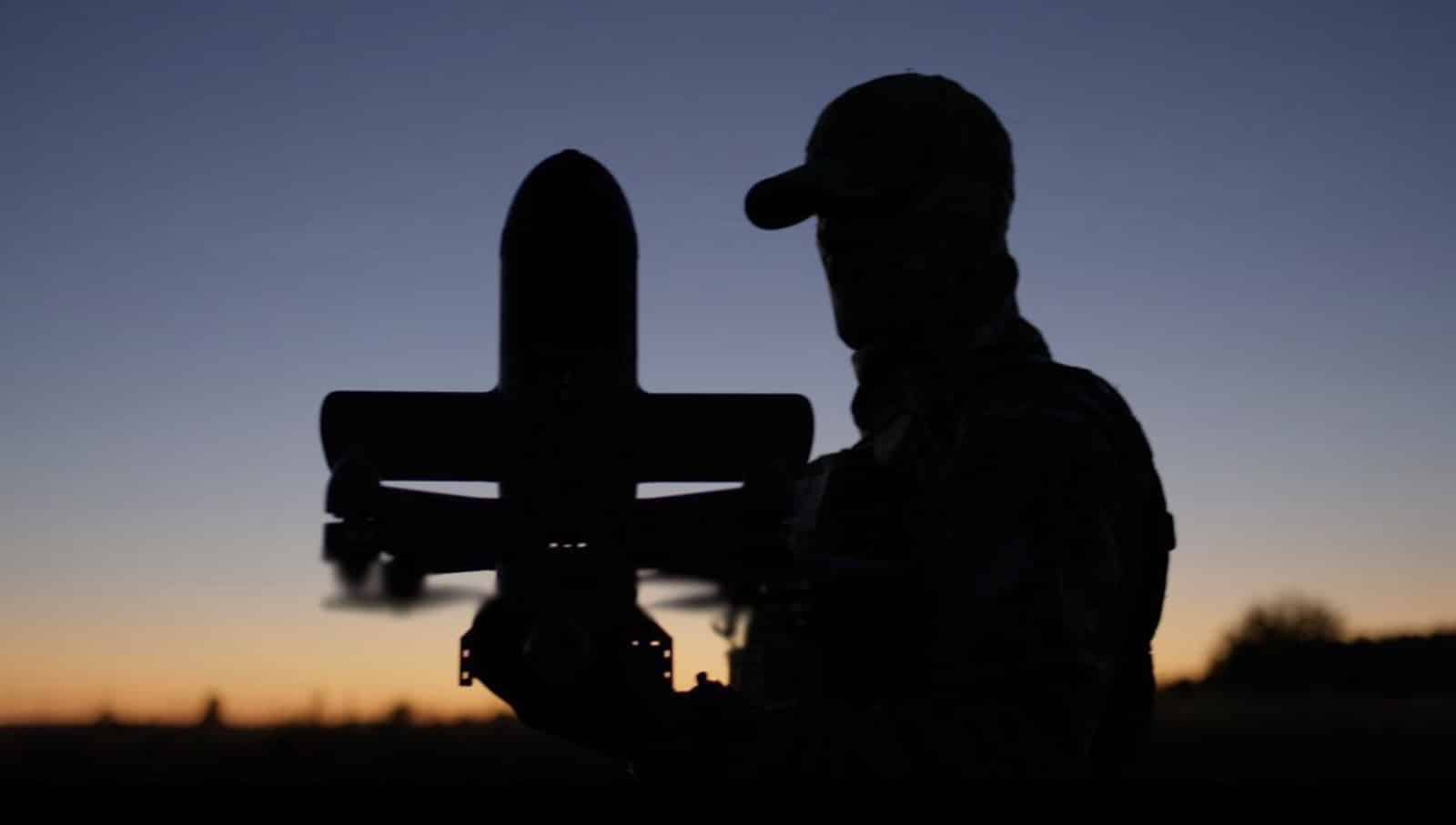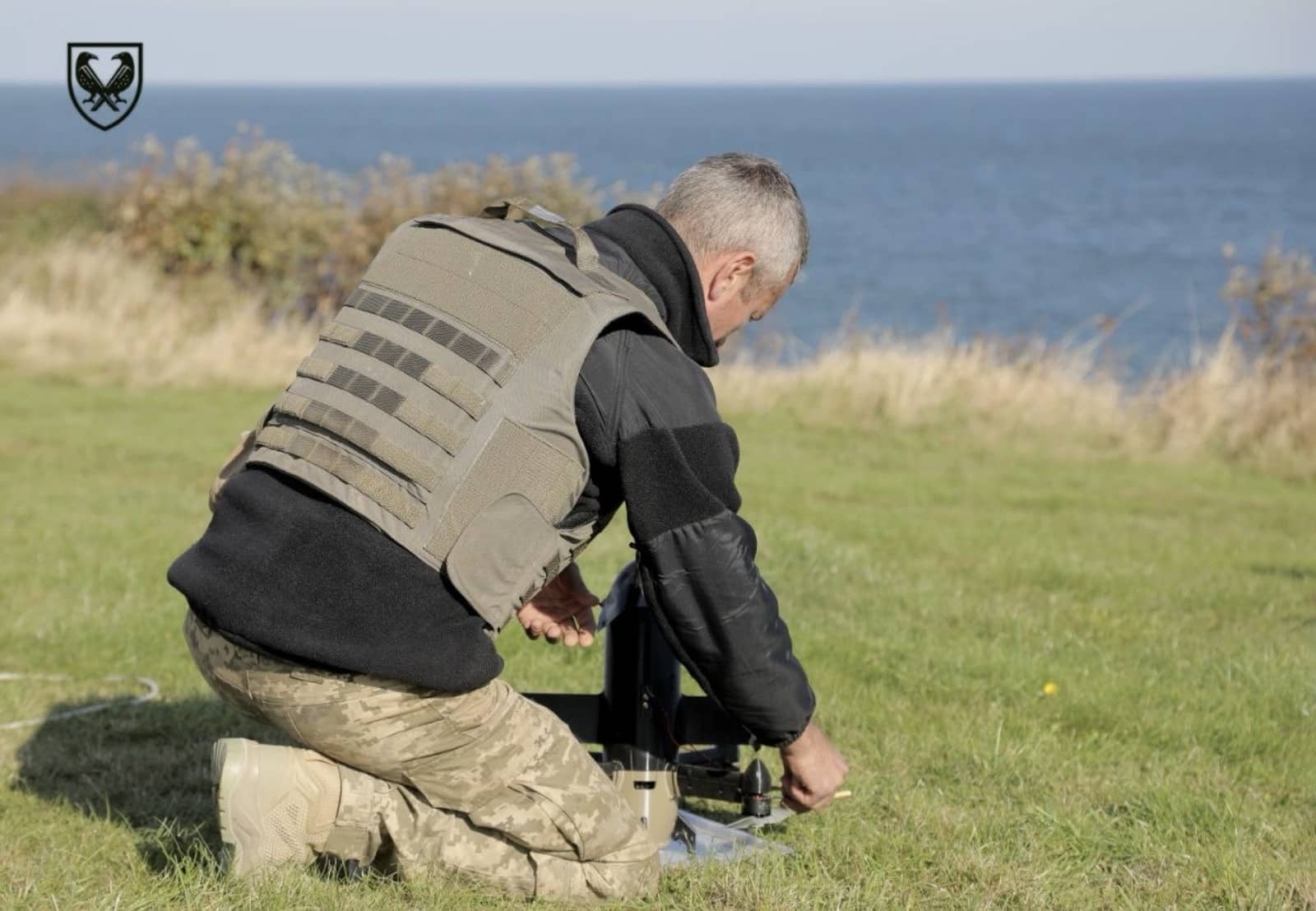Ukraine Shoots Down Danish Drone in NATO Exercise, Showcasing Battle-Tested Counter-UAS Skills

Ukrainian military operators successfully intercepted and destroyed a Danish Banshee training drone using their combat-proven Sting interceptor during a live NATO demonstration in Denmark, according to Ukraine’s General Staff. The real-time display of Ukraine’s battlefield-hardened counter-drone expertise comes as European allies scramble to defend against suspected Russian hybrid warfare targeting critical infrastructure across the Baltic region.
The demonstration matters because Ukraine isn’t just bringing theory—they’re bringing three years of brutal combat experience against the world’s most aggressive drone warfare campaign. While NATO allies debate counter-UAS strategies in conference rooms, Ukrainian operators have been hunting drones in active combat zones every single night.

Ukrainian Sting Interceptor Proves Combat Capabilities
During the “Wings of Defense” joint exercise, Ukrainian counter-UAV specialists launched a Sting drone developed by Wild Hornets, a Ukrainian volunteer-based nonprofit, which accurately tracked and destroyed the British-made Banshee target drone. Representatives from multiple European countries observed the interception in real time, and Ukrainian drone operators received numerous inquiries from foreign counterparts afterward.
The Sting interceptor has proven its worth on the battlefield. Over the past two months, these $2,500 drones have destroyed 205 targets—including 78 Iranian-made Shaheds and 127 Gerber decoy drones—according to Wild Hornets data. The quadcopter-style interceptor reaches speeds up to 315 km/h (195 mph) and operates at altitudes up to 3,000 meters (9,843 feet), making it ideally suited for hunting both reconnaissance and attack drones.
The Banshee target drone, manufactured by British defense company QinetiQ, is standard NATO equipment for air defense training. The twin-engine jet drone can reach speeds up to 720 km/h (450 mph) and altitudes of 9,144 meters (30,000 feet), representing realistic aerial threat scenarios.

NATO Cooperation Amid Baltic Security Crisis
Ukrainian specialists arrived in Denmark on September 29 as part of the Wings of Defense operation, training Danish forces in counter-drone tactics while assisting both Danish and NATO forces in protecting Danish airspace. The timing is critical: the exercise coincided with a series of mysterious drone incursions that forced multiple Danish airports to close in late September, including a nearly four-hour shutdown of Copenhagen Airport.
Danish Prime Minister Mette Frederiksen called the drone incidents “the most serious attack on Danish critical infrastructure to date.” Authorities detected a Russian naval vessel, the Aleksandr Shabalin, operating near Danish waters with its transponder disabled during the same period when unidentified drones were observed.
In response, France, Germany, and Sweden deployed military personnel and anti-drone systems to Denmark. NATO Secretary General Mark Rutte met with Frederiksen last week to discuss the incidents amid concerns over possible Russian reconnaissance activity.

DroneXL’s Take
This demonstration represents a remarkable role reversal. For decades, Ukraine received training and equipment from NATO allies. Now, after nearly four years of the most intensive drone warfare in history, Ukrainian operators are teaching European forces how to survive the aerial battlefield of the future.
We’ve been covering Ukraine’s rapid evolution in drone technology since the conflict began—from their early interceptor drone tests to their massive domestic manufacturing scale-up. The Sting’s success against 205 real combat targets isn’t a simulation—it’s verified by video confirmation from frontline troops facing nightly Russian drone barrages.
What makes this demonstration particularly significant is the cost asymmetry. Traditional air defense missiles can cost $1-4 million each. Ukraine is showing NATO allies how to intercept threats with $2,500 drones, preserving expensive missile systems for high-value targets. This isn’t just smart tactics—it’s survival mathematics when facing an adversary launching hundreds of drones per night.
The broader implications are sobering. If suspected Russian-linked vessels can launch drones that shut down Copenhagen Airport, what’s stopping similar operations against other European capitals? Ukraine’s hard-won expertise in counter-drone warfare isn’t just valuable—it may be essential for European security in an era of hybrid warfare.
What do you think? Share your thoughts in the comments below.
Photo credits: Wild Hornets
Discover more from DroneXL.co
Subscribe to get the latest posts sent to your email.
Check out our Classic Line of T-Shirts, Polos, Hoodies and more in our new store today!

MAKE YOUR VOICE HEARD
Proposed legislation threatens your ability to use drones for fun, work, and safety. The Drone Advocacy Alliance is fighting to ensure your voice is heard in these critical policy discussions.Join us and tell your elected officials to protect your right to fly.
Get your Part 107 Certificate
Pass the Part 107 test and take to the skies with the Pilot Institute. We have helped thousands of people become airplane and commercial drone pilots. Our courses are designed by industry experts to help you pass FAA tests and achieve your dreams.

Copyright © DroneXL.co 2025. All rights reserved. The content, images, and intellectual property on this website are protected by copyright law. Reproduction or distribution of any material without prior written permission from DroneXL.co is strictly prohibited. For permissions and inquiries, please contact us first. DroneXL.co is a proud partner of the Drone Advocacy Alliance. Be sure to check out DroneXL's sister site, EVXL.co, for all the latest news on electric vehicles.
FTC: DroneXL.co is an Amazon Associate and uses affiliate links that can generate income from qualifying purchases. We do not sell, share, rent out, or spam your email.


















